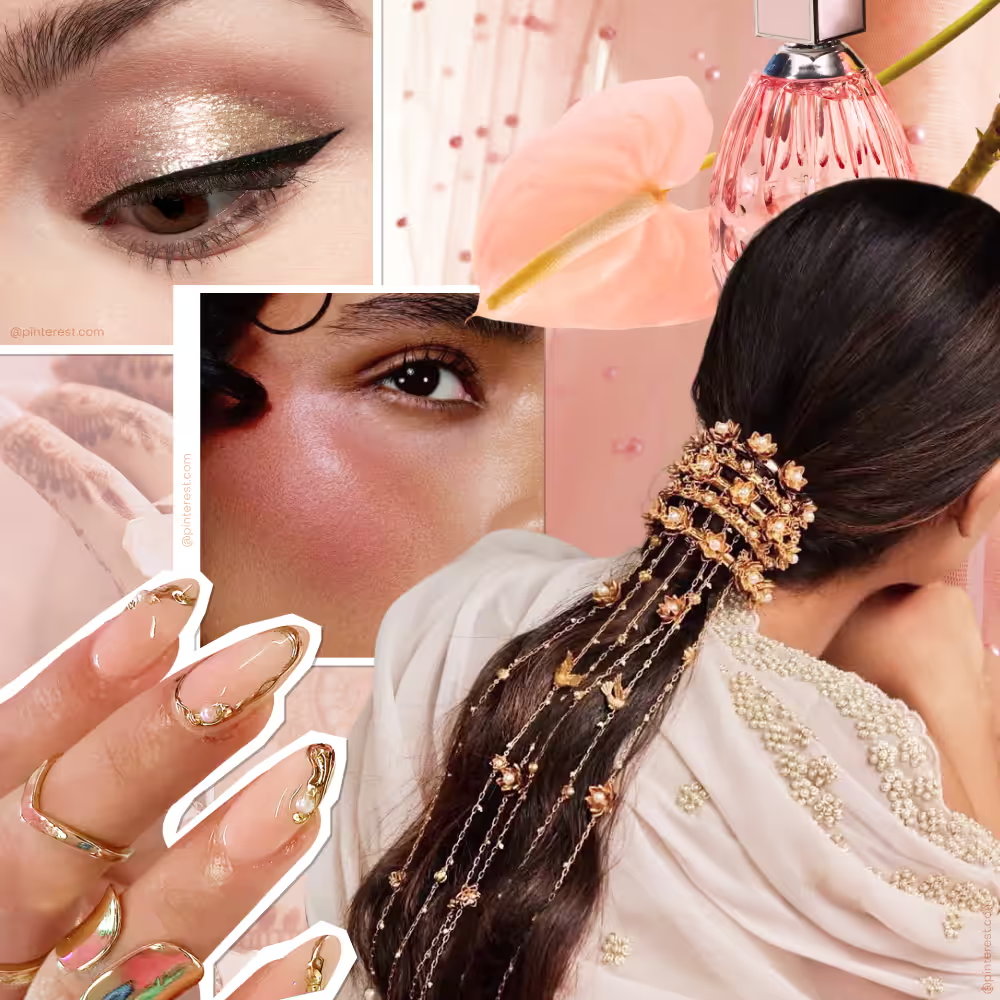
Let’s hit rewind and travel back to March 2020 – we're in the early days of the lockdown, and I am gearing up for morning meetings with a sheet mask on and face roller at the ready. There wasn’t much room for recreation after work, too, so I spent it either experimenting with skincare rituals or researching them. Meta took note of this because my Instagram was flooded with ‘skinstagram’ trends and launch posts of new homegrown brands entering the market. I was hooked—walking out of the pandemic with hair drenched in Paradyes colours and clear skin destined to misbehave once the office commute commenced.
Much ado about everything
Being bitten by the beauty bug wasn’t happening to me in isolation. Increased focus on personal care and hygiene forced the beauty market to cater to an influx of demand like never before. Trendy ingredients started to make their way into homegrown formulations and affordable prices kept us off our shopping hauls from international websites. Many capitalised on the accessibility of natural ingredients and traditional skincare remedies, catapulting brands like Forest Essentials, Kama Ayurveda and Just Herbs into household names.

The homegrown space caught momentum when it became a boiling pot for entrepreneurs to come out and play. SUGAR Cosmetics, led by Vineeta Singh, managed to stay relevant and grow all through lockdown; and did so with colour cosmetics, a segment that was slated for a freeze with a majority of the population working from home. How? Tapping into hybrid products by infusing makeup with skincare benefits hit the target. The same happened with Kiro, another homegrown fave. "Kiro was conceived keeping in mind that skincare and makeup are not mutually exclusive. Every formulation from our first product to our latest takes into consideration the challenges of the everyday woman wanting to wear makeup but struggling because there’s already so much affecting her face: extreme and varied weather conditions, pollution, etc," revealed founder Vasundhara Patni during a quick tête-à-tête about the brand’s journey. Other factors have contributed to the rise of homegrown beauty since; and thus, grew segments like serums with active ingredients, sunscreens, face tools and luxury fragrances.
The catalysts for change
It’s an exciting time to be a beauty lover (née fiend) right now. Brands, especially passion projects, started by people who spotted a glaring gap in the market, are exhaustively committed to their vision. And witnessing that is a thing of beauty. Becoming catalysts for change, I believe these forces are at work:
1. A fair advantage:
People who grew up with Indian skin and hair types, cultural practices and climates understand the unique beauty needs of the population. Whether it is effective curly hair routines or foundation shades diversifying into impressive ranges, brands are relying on cultural relevance to relate with Indian consumers and build trust.
2. A finger on the pulse:
Whether it’s on the back of a college degree or just possessing an eagle eye to spot trends, homegrown brands know exactly what their target audience wants. From BHA-infused body lotions to improving vitamin C formulations with local ingredients, innovation isn’t lacking. With tinted lip balms and cream blushes that glisten when it’s hot outside, homegrown brands often operate free from global trends and make their own rules.
3. Sustainable & conscious:
Facial oils, cleansers, masks, scalp serums, body butters, diverse product catalogues aren’t going to hurt anybody—especially with most of the brands being committed to sustainability and ethical practices. It has helped the brands to ingratiate themselves with the modern beauty consumer—one who is conscious of their consumption and how it affects the surroundings around them. Many Indian beauty brands prioritise local manufacturing, supporting local industries and artisans, and practising conscious packaging processes. Since the beauty industry is one of the most polluting industries right now, focusing on sustainability by adopting ethical practices is the need of the hour.
4. Go-local:
For Indians, supporting local businesses tends to be part of the DNA. In addition to this community-led practice being good for economics, it also provides consumers with more options to choose from. Encouraging healthy competition among brands, we're blessed with better quality products and more affordable prices as a desirable outcome of going local.
5. Accessibility like never before:
Spreading access to tier-two and tier-three cities not only makes for good business, but also promotes the importance of selfcare in otherwise ignored spaces. Homegrown brands have shown incredible insight by targeting these demographic spheres.
6. A social presence of mind:
Leveraging the power of social media platforms and influencer marketing, homegrown brands are revolutionising marketing practices. Relatable content, delivered through people with their own stories to tell, has increased brand visibility and credibility among consumers.
7. Building a legacy:
Homegrown beauty brands have a rare personability to them that defies the rules of business. Compelling brand stories and legacy-building identities further emphasise their Indian roots and cultural heritage. It brings a sense of pride among Indian consumers and extends an emotional connection they may not feel with their international counterparts.
With its ever-rising demands, India has caught the fancy of the global beauty industry. From legacy beauty houses to celebrity-backed brands, everybody has skin in the Indian beauty game. It’ll be exciting to see how these opposing forces interact in an already saturated market.







.JPG)
.JPG)
.JPG)
.JPG)
















